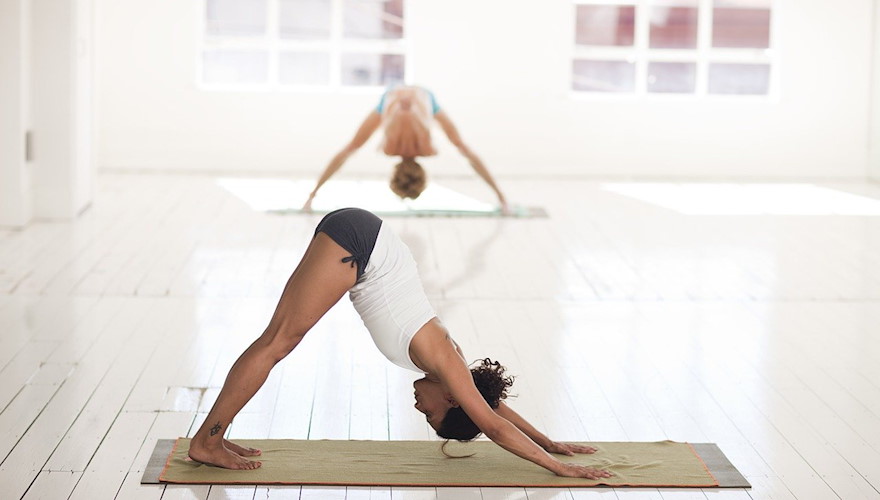Healthy and happy with yoga

A calm mind creates harmony with oneself.
The benefits of yoga have not changed since its inception.
But confirmed, as the development proves. Today, yoga has become an instrument that provides the necessary health balance to our stressful time and thus also helps to feel more happy.
Yoga, created several thousand years ago in the ancient Indian space, denotes a very exact and time-tested science. Yoga is aimed at a harmonious development of the body, mind and soul. A regular practice of exercises regulates and activates the respiratory system, metabolism, digestive system and hormonal function.
On a purely physical level, yoga strengthens the nervous system, helps with stress-related disorders such as high blood pressure, stomach disorders and headaches, promotes the ability to concentrate and ensures inner balance. Yoga activates and optimizes the entire immune system, respiratory system and circulation. Yoga postures (asanas) involve all muscles, ligaments and joints as well as the organs. Yoga is therefore highly recommended for respiratory diseases up to asthma as well as for all, mostly civilization-related back ailments. On the spiritual level, yoga is understood as a holistic, non-dogmatic path to the divine, sinking into meditation promotes spiritual development, while patience, tolerance and satisfaction grow.
Yoga practitioners develop a new way of looking at life, expand their consciousness and sharpen their will and judgment.
The original aim of yoga was to support people in becoming aware of their true essence, which is understood as an expression of the absolute or the divine. Over the centuries, this has developed into a spiritual practice that has persisted to this day, but has changed again and again in its methods and techniques to this day.
Benefits of Yoga: The Calm Mind
At first, the aspect of health was insignificant in yoga, apart from the fact that integration into a meaningful life perspective is one of the essential foundations of our mental and physical well-being. Already in the famous early Indian memorandum Bhagavad Gita it becomes clear that yoga can clarify and calm the mind when the waves of life beat so high that man threatens to collapse under the pressure of his responsibilities and tasks. Here, methods of yoga – calming, reflection and meditation – were described in order to show Arjuna, the princely hero of this epic, the way out of disorder and depression and thus make him able to act again.
Yoga as a means of training the mind was then elaborated in particular by Patañjali in the yoga sutras. The question of how the observed patterns of thinking, feeling and behavior promote or hinder the holistic well-being of a person was of interest. The practice steps of the yoga path offer the practitioner the opportunity to separate the essential from the non-essential, to set beneficial priorities and, above all, to practice new behavior and to consolidate it in the brain as a new pattern.
The yoga sutra, which is now around 2,000 years old, makes it clear that people's mental problems are obviously unchanged, so it reads like a modern guide. To this day, it is the basic text for all yoga traditions and, in its captivating clarity, groundbreaking for the holistic concern of yoga, to influence the mind, the breath and the body of man equally.
Tip: The exercises can be wonderfully adapted to any age. They gently make the body stronger, keep the mind on its toes and the psyche stable.



